
VERSIÓN ESPAÑOL:
¿Cómo va la gente de Blurt?
Les aúllo el chisme por el que seguro vienen a leer a mi cueva de meditación:
Buenos Aires no nació de un solo intento, sino que fue el resultado de perseverancia, conflictos y ambición. La primera fundación ocurrió en 1536, cuando el español Pedro de Mendoza desembarcó en la costa del Río de la Plata con la intención de establecer un asentamiento. El lugar elegido no era precisamente un paraíso: un terreno pantanoso, difícil de defender y rodeado por pueblos indígenas que no vieron con buenos ojos la llegada de los europeos. Las tensiones crecieron rápidamente y los ataques constantes, sumados a la falta de alimentos, obligaron a los sobrevivientes a abandonar la zona unos años después.
Sin embargo, el atractivo de este rincón estratégico no desapareció. En 1580, Juan de Garay lideró la segunda fundación, esta vez con mayor planificación. La ciudad se llamó oficialmente "Ciudad de la Santísima Trinidad y Puerto de Santa María del Buen Ayre", un nombre largo y solemne que con el tiempo se redujo simplemente a Buenos Aires. A diferencia de la primera vez, esta vez la población logró consolidarse y crecer, en parte gracias a su ubicación clave para el comercio, aunque la Corona española intentó durante años limitar su desarrollo para no restarle protagonismo a Lima, el centro de poder virreinal en Sudamérica.
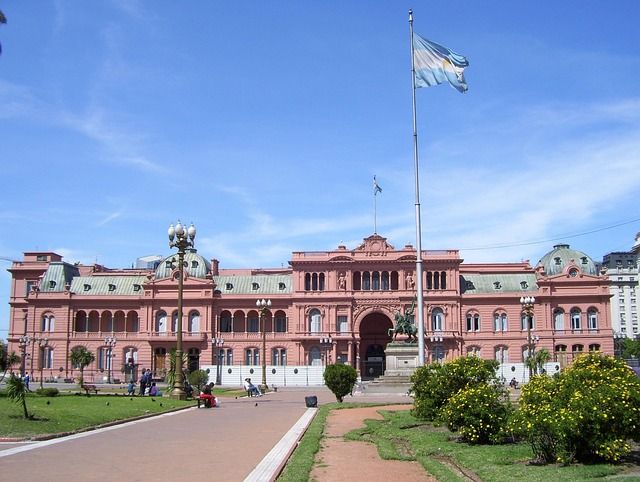
Pero Buenos Aires tenía su propio carácter. El contrabando floreció, y con él, la ciudad se convirtió en un punto neurálgico del Atlántico Sur. Su crecimiento imparable llevó a que, en 1776, fuera elegida como capital del recién creado Virreinato del Río de la Plata, lo que le otorgó finalmente el protagonismo que tanto había buscado. A partir de ahí, su historia estuvo marcada por levantamientos, revoluciones y transformaciones que la llevaron de ser un puerto marginal a una metrópoli vibrante y cosmopolita.
Caminar hoy por sus calles es recorrer esa historia viva. Desde la Plaza de Mayo, donde resonaron los gritos de independencia, hasta el barrio de San Telmo, con su aire colonial y sus calles empedradas, todo en Buenos Aires es testimonio de su origen turbulento y su constante reinvención. Como una ciudad que se negó a desaparecer tras su primer intento fallido, su identidad se construyó en base a la tenacidad y el deseo de encontrar su propio camino en el mundo.
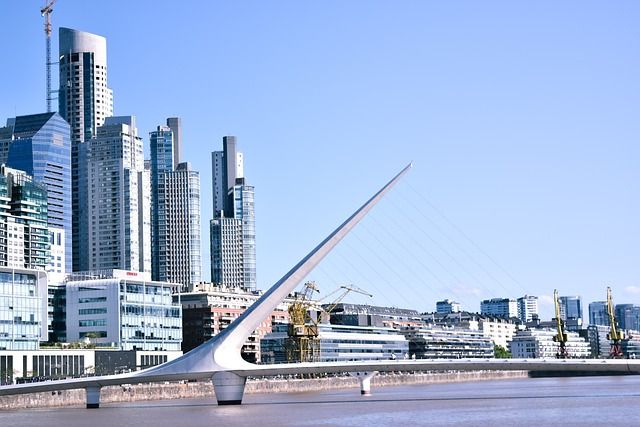
Buenos Aires tiene esa mezcla difícil de encontrar: una ciudad que nunca duerme, que vibra con historia y cultura en cada esquina, pero que al mismo tiempo se siente accesible y cercana. No es solo su arquitectura europea con toques de París, Madrid o Roma, ni sus cafés antiguos que parecen detenidos en el tiempo. Es el ritmo con el que la ciudad se mueve, esa combinación de nostalgia y energía que la hace tan irresistible para quienes la visitan.
El tango, por supuesto, es una de sus marcas registradas. No hace falta buscar demasiado para encontrarse con una pareja bailando en una plaza, con la música saliendo de algún bar o con espectáculos que mezclan tradición y modernidad. En San Telmo, con sus calles empedradas y sus faroles antiguos, la esencia del tango parece haberse quedado atrapada en el aire. Pero Buenos Aires es más que su baile icónico: es también su literatura, su arte y su vida nocturna que nunca parece terminar.

La Avenida Corrientes es una muestra de ese espíritu. Librerías abiertas hasta la madrugada, teatros con carteleras en constante renovación y pizzerías que son casi una religión para los porteños. En pocos lugares del mundo se puede salir a cenar pasada la medianoche y encontrar la ciudad tan viva como en pleno día. Y si de gastronomía se trata, la carne argentina es otro de los grandes motivos para visitar la ciudad. Desde las parrillas más tradicionales hasta las propuestas más modernas, el asado es un ritual que trasciende la comida.
Los barrios porteños tienen cada uno su propia personalidad. La Boca, con su famoso Caminito, es un estallido de colores y cultura popular. Recoleta, en cambio, es elegante y señorial, con su cementerio lleno de historias y su aire aristocrático. Palermo es el epicentro de la modernidad, con cafés de especialidad, parques enormes y una vida nocturna que no deja de renovarse. Y el centro, con la Plaza de Mayo como testigo de los grandes momentos de la historia argentina, es un paso obligado para entender el alma de la ciudad.
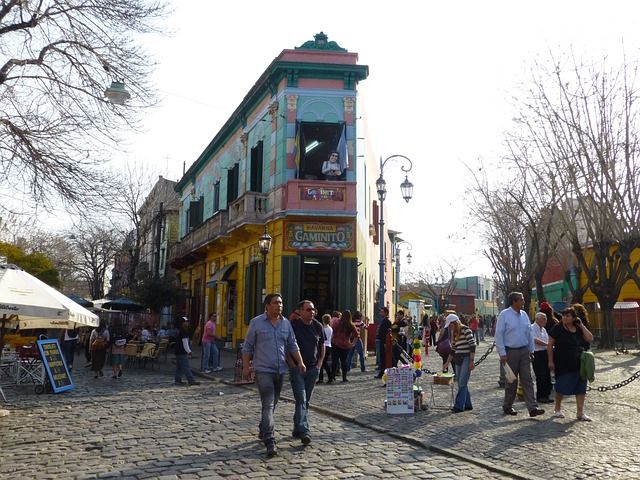
Pero quizás lo que más enamora de Buenos Aires es esa sensación de estar en un lugar que siempre tiene algo nuevo para ofrecer. Cada visita revela un rincón escondido, una historia desconocida o una experiencia inesperada. No importa cuántas veces se la recorra, siempre deja la sensación de que aún queda mucho por descubrir.
Buenos Aires no solo se recorre con los ojos, sino también con el paladar. Comer en esta ciudad es una experiencia en sí misma, un viaje a través de sabores que combinan tradición, inmigración y cultura popular. La comida porteña está marcada por la influencia italiana y española, pero también tiene su propia identidad, con platos que se convirtieron en clásicos indiscutidos.
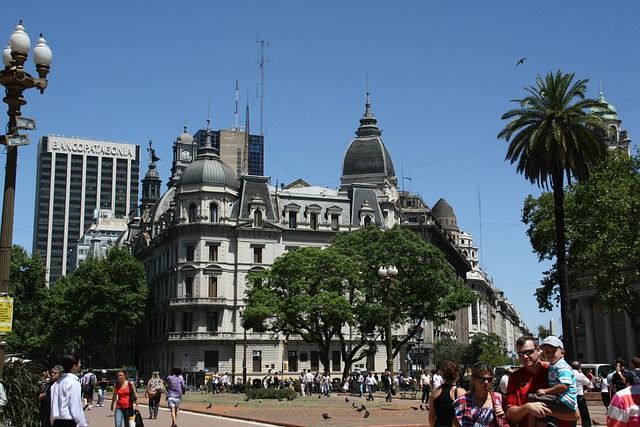
El asado es, sin dudas, el rey de la mesa. Más que una comida, es un ritual que reúne familia y amigos alrededor de la parrilla. La carne argentina es famosa en el mundo, y en Buenos Aires se la disfruta en su máxima expresión. Desde un bife de chorizo jugoso hasta unas costillas que se deshacen con solo mirarlas, cada corte tiene su encanto. No pueden faltar las achuras: chorizo, morcilla, mollejas y chinchulines, que completan la experiencia de un asado bien porteño.
Pero si hay algo que los porteños consumen casi religiosamente, es la pizza. Al estilo argentino, claro: masa gruesa y esponjosa, con una cantidad de queso exagerada que se estira en cada bocado. La muzzarella es la estrella, pero la fugazza con queso, con su base de cebolla caramelizada, y la fugazzeta rellena, que es una bomba de sabor, no se quedan atrás. Comer una porción de pizza de parado en una pizzería de la Avenida Corrientes, acompañada por una fainá (una especie de pan de garbanzo), es una de esas experiencias obligadas.
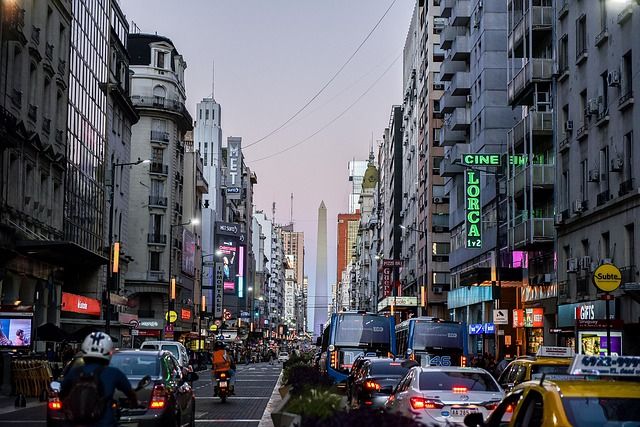
Otro infaltable es la milanesa. Ya sea napolitana (cubierta con salsa de tomate, jamón y queso) o simple, se la encuentra en cualquier menú porteño. Algunas son gigantes, casi del tamaño del plato, y se pueden acompañar con papas fritas o puré. En muchas casas, la milanesa es un clásico de los almuerzos familiares.
Y para la merienda, nada como unas facturas con mate o café. Las más queridas son las medialunas, dulces o saladas, que se pueden encontrar en todas las panaderías. También están los vigilantes, los sacramentos y los cañoncitos rellenos de dulce de leche, porque si algo no falta en la cocina argentina, es este manjar. De hecho, el alfajor, dos tapas de galleta rellenas de dulce de leche y bañadas en chocolate o azúcar, es otro símbolo de la ciudad. Se venden en cada kiosco y hay decenas de variedades, pero lo cierto es que ningún viaje a Buenos Aires está completo sin probar al menos uno.

Por supuesto, no todo termina ahí. La ciudad tiene una oferta gastronómica infinita, con bodegones que sirven platos caseros en porciones abundantes, restaurantes de comida fusión que reinventan los clásicos y cafeterías donde el café de especialidad se combina con pastelería de primer nivel. Pero más allá de las opciones, lo que define la gastronomía porteña es su espíritu: comida abundante, llena de sabor y siempre acompañada por una buena conversación.
Ya los leo más tarde.
Chau.
ENGLISH VERSION:
How's it going, Blurt folks?
I am telling you the gossip that you are surely coming to read in my meditation cave:
Buenos Aires wasn't born in a single attempt, but rather the result of perseverance, conflict, and ambition. The first foundation occurred in 1536, when the Spaniard Pedro de Mendoza landed on the coast of the Río de la Plata with the intention of establishing a settlement. The chosen location was hardly a paradise: a swampy terrain, difficult to defend, and surrounded by indigenous peoples who did not welcome the arrival of Europeans. Tensions quickly grew, and constant attacks, coupled with a lack of food, forced the survivors to abandon the area a few years later.
However, the appeal of this strategic location did not disappear. In 1580, Juan de Garay led the second foundation, this time with greater planning. The city was officially named "City of the Holy Trinity and Port of Santa María del Buen Ayre," a long and solemn name that eventually became shortened to simply Buenos Aires. Unlike the first time, this time the population managed to consolidate and grow, partly thanks to its key location for trade, although the Spanish Crown tried for years to limit its development so as not to detract from the prominence of Lima, the viceregal center of power in South America.

But Buenos Aires had its own character. Smuggling flourished, and with it, the city became a hub of the South Atlantic. Its unstoppable growth led to its selection as the capital of the newly created Viceroyalty of the Río de la Plata in 1776, finally giving it the prominence it had long sought. From then on, its history was marked by uprisings, revolutions, and transformations that took it from a marginal port to a vibrant and cosmopolitan metropolis.
Walking through its streets today is like exploring that living history. From Plaza de Mayo, where cries for independence resonated, to the San Telmo neighborhood, with its colonial feel and cobblestone streets, everything in Buenos Aires bears witness to its turbulent origins and constant reinvention. As a city that refused to disappear after its first failed attempt, its identity was built on tenacity and the desire to find its own way in the world.

Buenos Aires has that hard-to-find mix: a city that never sleeps, vibrant with history and culture on every corner, yet simultaneously feels accessible and approachable. It's not just its European architecture with hints of Paris, Madrid, or Rome, nor its old-fashioned cafes that seem frozen in time. It's the rhythm with which the city moves, that combination of nostalgia and energy that makes it so irresistible to visitors.
Tango, of course, is one of its trademarks. You don't have to look far to find a couple dancing in a square, music pouring from a bar, or shows that blend tradition and modernity. In San Telmo, with its cobblestone streets and antique lanterns, the essence of tango seems to have been trapped in the air. But Buenos Aires is more than its iconic dance: it's also its literature, its art, and its nightlife that never seems to end.

Corrientes Avenue is an example of that spirit. Bookstores open until dawn, theaters with constantly changing schedules, and pizzerias that are almost a religion for the people of Buenos Aires. In few places in the world can you go out to dinner after midnight and find the city as alive as in broad daylight. And when it comes to gastronomy, Argentine beef is another great reason to visit the city. From the most traditional grills to the most modern offerings, the asado is a ritual that transcends food.
Buenos Aires neighborhoods each have their own unique personality. La Boca, with its famous Caminito, is a burst of color and popular culture. Recoleta, on the other hand, is elegant and stately, with its history-filled cemetery and aristocratic air. Palermo is the epicenter of modernity, with specialty cafes, vast parks, and an ever-changing nightlife. And the center, with the Plaza de Mayo as a witness to the great moments of Argentine history, is a must-see for understanding the soul of the city.

But perhaps what makes you fall most in love with Buenos Aires is that feeling of being in a place that always has something new to offer. Each visit reveals a hidden corner, an unknown history, or an unexpected experience. No matter how many times you visit, you always feel like there's still so much to discover.
Buenos Aires isn't just explored with your eyes, but also with your palate. Eating in this city is an experience in itself, a journey through flavors that combine tradition, immigration, and popular culture. Buenos Aires food is marked by Italian and Spanish influences, but it also has its own identity, with dishes that have become undisputed classics.

The asado is, without a doubt, the king of the table. More than a meal, it's a ritual that brings family and friends together around the grill. Argentine meat is world-famous, and in Buenos Aires, it's enjoyed at its finest. From a juicy ribeye steak to ribs that melt just by looking at them, each cut has its own charm. Offal is a must: chorizo, blood sausage, sweetbreads, and chitterlings, which complete the experience of a true Buenos Aires asado.
But if there's one thing that Buenos Aires residents eat almost religiously, it's pizza. Argentine style, of course: thick, fluffy dough, with an exaggerated amount of cheese that stretches out in every bite. Mozzarella is the star, but the cheesy fugazza, with its caramelized onion base, and the stuffed fugazzeta, which is a flavor bomb, are not far behind. Eating a slice of pizza standing up at a pizzeria on Corrientes Avenue, accompanied by fainá (a type of chickpea bread), is one of those must-try experiences.

Another must-have is the Milanese. Whether Neapolitan (covered with tomato sauce, ham, and cheese) or plain, it can be found on any Buenos Aires menu. Some are gigantic, almost the size of a plate, and can be accompanied with French fries or mashed potatoes. In many homes, Milanese is a classic family lunch.
And for a snack, nothing beats facturas (breads) with mate or coffee. The most beloved are medialunas (small pastries), sweet or savory, which can be found in every bakery. There are also vigilantes (small pastries), sacramentos (small pastries), and cañoncitos (small pastries) filled with dulce de leche, because if there's one thing Argentine cuisine can't miss, it's this delicacy. In fact, the alfajor, two cookie shells filled with dulce de leche and dipped in chocolate or sugar, is another symbol of the city. They're sold at every kiosk and come in dozens of varieties, but the truth is that no trip to Buenos Aires is complete without trying at least one.

Of course, it doesn't end there. The city has an endless culinary offering, with taverns serving home-style dishes in generous portions, fusion restaurants reinventing classics, and cafés where specialty coffee is paired with top-notch pastries. But beyond the options, what defines Buenos Aires cuisine is its spirit: hearty food, full of flavor, and always accompanied by good conversation.

Hello @paulindstrom! 🎉
Congratulations! Your post has caught the attention of the curator @baiboua from the Blurt LifeStyle community and has received our support. 🌟
We appreciate your contribution to the community and look forward to seeing more of your amazing content! Keep sharing your experiences and inspiring others. 🚀✨